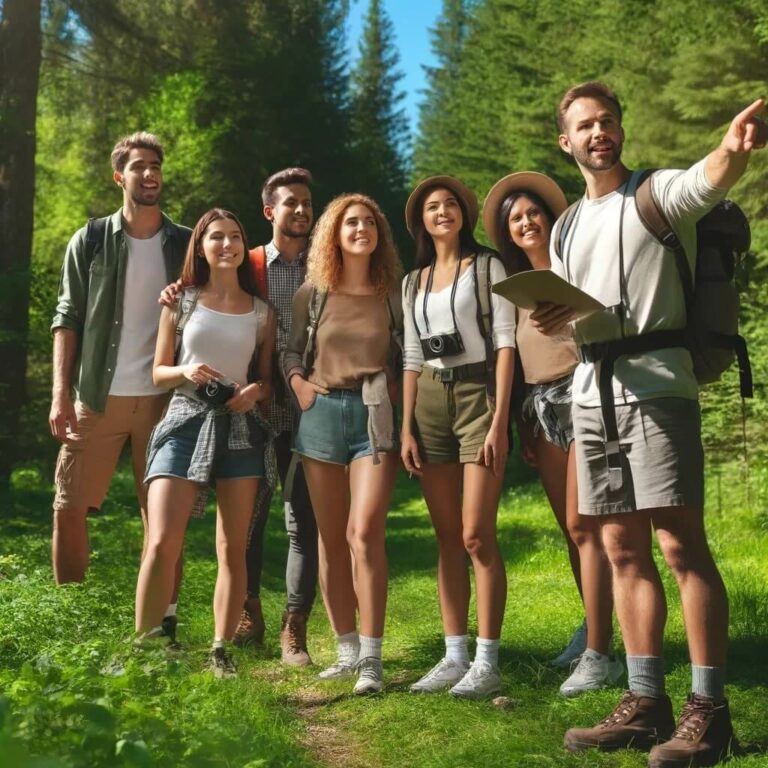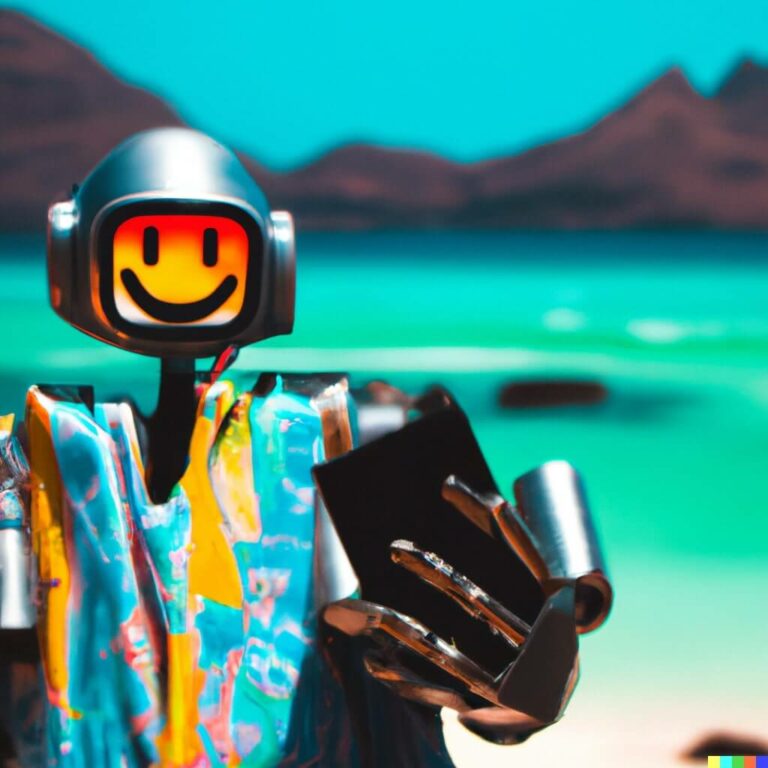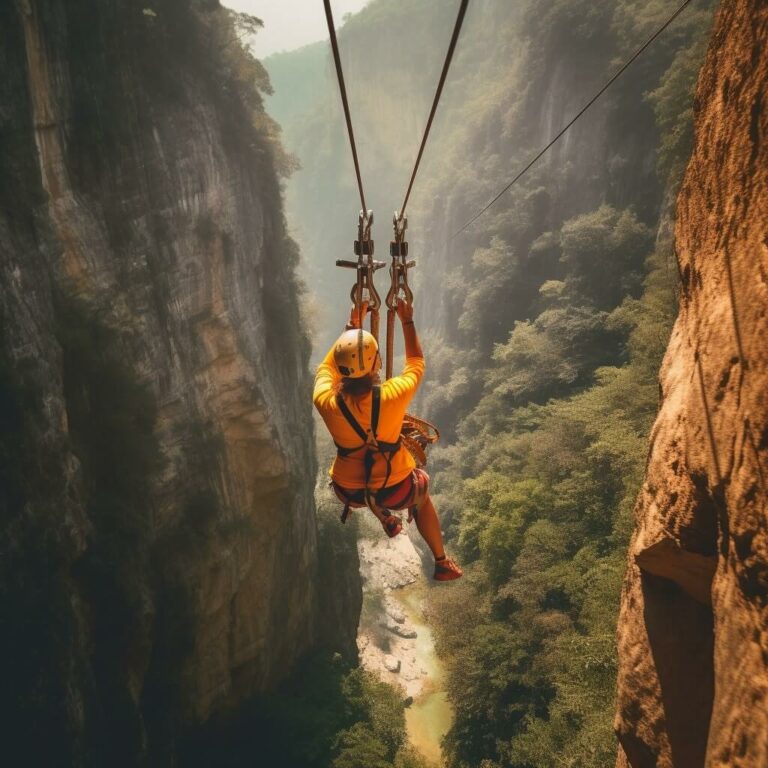
Natural Language Processing (NLP) is transforming the way operators and guests interact with one another on and offline.
If it sounds complex, it’s because NLP is the technology behind voice assistants like Siri, chatbots, and language translation services. In other words, NLP is likely already present in your booking process.
In this article, we’ll dive into the world of natural language processing and explore the ins and outs of how it applies to the tourism industry — and how tours and attractions can harness this to enhance customer experiences.
What is Natural Language Processing?
Natural Language Processing (NLP) is how we get computers to understand, interpret, and respond to text or speech data in a way that makes sense.
NLP is the backbone of various AI tools, from voice assistants like Siri to chatbots like ChatGPT.
The Role of NLP in the Tourism Industry
NLP plays an increasingly vital role in the tours and attractions space. The technology has helped chatbots, specifically, evolve beyond a virtual customer service agent. They’re now providing personalized recommendations, planning itineraries, and even booking travel for guests.
Here are a few of the most relevant ways NLP is changing the online booking landscape:
- Improving automated customer interactions: NLP allows tour and attraction operators to communicate with customers in a more natural and conversational manner. Chatbots and virtual assistants can respond to travelers’ questions the same way a real human might, whether it’s about tour details, availability, or recommendations.
- Offering personalized recommendations: NLP algorithms can analyze customer data and preferences to provide personalized recommendations. For example, if a family is looking for a tour, a chatbot might suggest a visit to a family-friendly attraction, taking into account the number of children and the group’s preferred activity levels.
- Enhancing communication with international tourists via multilingual support: Break language barriers by offering real-time translation services, enabling you to communicate with a wider scope of travelers in their native languages.
- Streamlining the online booking processes: Not only can travelers receive personalized recommendations on what to do in a destination, but in some instances, they can book it right on the spot. NLP-powered chatbots can assist customers in finding and booking tours or attractions directly through messaging platforms.
What are the benefits of NLP for tours and attractions?
As NLP technology advances, chatbots get better and smarter. On the operator end, this means:
- You can decrease your operational costs: NLP makes it possible for chatbots to handle frequently asked questions — like “What’s your cancellation policy?” or “Is there parking available on-site?” Whereas normally a staff member would have to keep an eye on your live chat platform, answer an email, or pick up the phone to answer routine customer queries, chatbots can now do that for them. In turn, operators decrease their operational costs and free up their staff to focus on more pressing issues.
- Chatbot interactions will bring you valuable insight into how your customers are feeling: Every conversation your guests have with a chatbot is a valuable piece of customer data. NLP allows operators to quickly analyze guest conversations and feedback data, providing insights into customer satisfaction and areas for improvement. It can also measure sentiment in post-tour surveys, for example.
- They’ll help you build a stronger relationship with your customers: NLP-powered chatbots help you personalize the customer experience, setting your brand apart from your competitors. As customers become loyal to your brand, they’ll recommend the experience to others and possibly return for a second visit.
Applications of NLP in Tourism
From chatbots to virtual reality, NLP is changing the way customers book and experience travel around the world.
1. Chatbots
Travelers of all kinds are exploring ChatGPT’s travel planning capabilities, from finding things to do in a destination to booking hotel stays.
One family, for example, used the chatbot to plan an RV road trip through Southern California. To start, the family needed to find an RV rental that met their specific requirements.
While the chatbot couldn’t directly make reservations, it did recommend potential campsites, restaurants, local attractions, and a checklist of items to pack. It also offered a series of relevant step-by-step instructions for things like hooking up the RV to sewage facilities. The family also received personalized dining recommendations, as well as guidance on building a campfire for s’mores.
2. Voice search travel planning
The rise of voice-activated chatbots like Amazon’s Alexa and Google Assistant is also reshaping how guests plan their trips.
Expedia, for example, integrated with Alexa so that travelers can voice their travel questions out loud and hear details on upcoming trips purchased on Expedia.com. They can ask for specifics about their hotel bookings, flight status, loyalty points balance, rental car reservations, and more.
As you can see in this YouTube video, a traveler can even use the feature to rent a car. These voice-activated bots are powered by NLP, allowing them to understand human language and respond accordingly.
3. Personalized travel recommendations
NLP helps a chatbot decipher human language and better understand what a traveler is looking for. This is what makes it possible for chatbots to offer personalized itineraries, hotel recommendations, and more.
GuideGeek, for instance, is an AI-powered chatbot that specializes in providing travel tips, ranging from the best places to stay and eat to advice on how to avoid crowds. The app works via WhatsApp or Instagram: A traveler can simply message the chatbot on either platform with questions or requests.
For example, one traveler planned a full day in Kyoto, Japan using GuideGeek’s recommendations. The traveler received tips on where to find a traditional Japanese meal and provided historical background on iconic monuments. All the user had to do was provide a destination, and the app delivered helpful insights to plan their day.
Operators could use such an app to provide guests with tailor-made itineraries or recommendations for the rest of their stay. This will show your guests that you care about their travel experience beyond your tour or attraction.
4. Sentiment analysis
You can use a tool, like ChatGPT’s Advanced Data Analysis to conduct sentiment analysis at scale. This can help with analyzing sentence structures and verbal cues in support instances to understand how a customer is feeling.
On the operator front, this gives you access to a treasure trove of customer satisfaction data. It can also make the human handover process more efficient. For example, your chatbot analyzes the sentiments of a conversation and hands it over to an actual customer service agent when the customer becomes frustrated.
Popular cosmetic brand CoverGirl has an influencer chatbot that uses sentiment analysis to respond in a smart and funny way, allowing the brand to better connect with its young customer base. By keeping the conversation positive, the chatbot has been able to drive 17 messages per conversation.
5. Automated translation
A chatbot can be programmed to support multiple languages, allowing you to communicate with international customers without the need for multilingual agents. ChatGPT, for example, can communicate in over 50 languages.
NLP technology has evolved into the physical world, too. Pocketalk, for example, is a device that translates conversations in real time, making it possible for travelers to communicate with locals in a foreign country.
If you’re able to leverage NLP to communicate with your customers in their native language, the experience will feel even more personalized. And in the tours and attractions space, personalization is key to your success.
6. AR- and VR-Assisted Tours
Virtual reality (VR) and augmented reality (AR) technologies are increasingly appearing within the tours and attractions space, too. We’re seeing more immersive experiences and virtual exploration of destinations, such as the ability to explore a hotel room before checking in or taking a virtual walk through the streets of Paris.
At Hub Hotels by Premier Inn, augmented reality is displayed in interactive wall maps that provide digital information about specific places that visitors are interested in seeing. With the Paris Then and Now app, travelers can virtually walk through an older version of the city to see what it looked like in the past.
Challenges and Considerations in Tourism NLP
While NLP offers significant advantages to the tourism industry, it also comes with its own challenges that tour and attraction operators need to be aware of.
Data Privacy
Data privacy is a top concern. When collecting and processing customer data, operators must comply with data protection laws like the General Data Protection Regulation (GDPR). Maintain the trust between you and your customers by clearly communicating your data usage policies — and always give them the option to delete their data.
Cultural and language nuances
Depending on the tour and attraction, you may be catering to a global audience. Even if your city isn’t a hotspot for international tourists, you’ll be welcoming guests from all backgrounds and cultures. What might be polite in one culture could be considered offensive in another. That being said, it’s important to regularly audit your chatbot interactions for offensive nuances or biases.
Fine-tuning LLMs
Fine-tuning Language Models (LLMs) is an ongoing process. This is the process of teaching your chatbot how to communicate in a way that aligns with your brand’s voice. You’ll need to continuously train and optimize your chatbot’s language model. This involves analyzing chat logs to identify frequent misinterpretations, as well as collaborating with language experts that can simplify the process.
Handling diverse and complex questions
A robot can only do so much. Even when a question is too complex, the chatbot needs to know how to assist the customer. As a tour operator, it is your responsibility to train chatbots to understand how to respond to complex questions effectively. This ensures it can provide accurate answers and pass on the query to an agent when necessary.
Training your team
Any big change can cause some friction between management and the staff. The introduction of chatbots may cause concerns for your frontline employees, who might fear being replaced. In this case, it’s key to make them aware of the chatbot’s true role: They are tools designed to support staff, not replace them. Provide training to your employees on how to work with chatbots, rather than against them. They’ll soon realize that it can actually make their job easier.
***
By addressing these challenges and considerations, tour and attraction operators can harness the power of NLP to enhance customer service, streamline operations, and provide a more personalized experience to guests.





